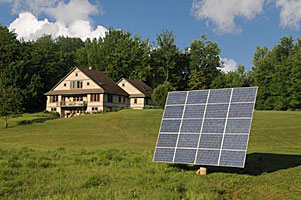Expanded solar permitting program in Vermont cuts ‘soft costs’
 Vermont, which already had one of the most accessible solar permitting processes, announced a change last week that will make it even easier to install large residential and small commercial solar arrays.
Vermont, which already had one of the most accessible solar permitting processes, announced a change last week that will make it even easier to install large residential and small commercial solar arrays.
The state implemented a solar registration program last year that allowed residents to save on permitting time and fees by submitting a registration form. If the utility doesn’t object within 10 days of the application, it’s approved. “The registration program recognizes that a reduced barrier to solar would be beneficial to the customers,” said Andrew Savage, spokesman for Vermont-based AllEarth Renewables.
The state increased the size of the projects that qualify for the registration program from 5 kilowatts to 10 kilowatts. “The feeling was that while initially the 5-kilowatt limit worked well, by doubling the size, we would better reflect the size for almost any residential installation and a lot of smaller commercial installation,” Savage said.
The registration program was implemented in response to a call for reducing the cost of solar. Many argue that “soft costs” like permitting fees and lost time, needlessly add to the cost of solar installations. SunRun published a study in 2011 that estimated permitting costs added an average of $2,500 to the bottom line of each solar installation.
Before the registration program in Vermont, solar applicants had o receive a certificate of public good from the state’s public service board, a quasi-judicial agency that regulates electric power companies. After the application is filed, there is a 30-day public comment period and issues brought up through those comments have to be resolved before a permit is issued. The solar registration streamlines the application process
“Vermont is really at the forefront,” Savage said. “Our initiative has certainly generated a lot of national interest from both industry and policy leaders." He said solar industry leaders and policy makers in Vermont have been working with the Department of Energy and the SunShot Initiative to discuss how the program could serve as a model to other states and communities throughout the country.



